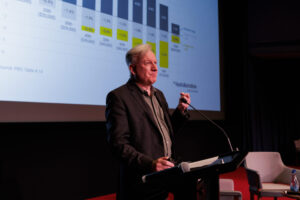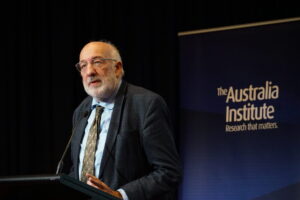What will Wong’s CPRS actually do?
The CPRS is increasingly looking like the answer to a question that nobody asked, namely, what would be the best way to introduce a complex and expensive national scheme that sounds like a solution to climate change without really changing anything? But as the Senate vote gets closer the first question that the Climate Change Minister, Penny Wong, must answer is this: if the Carbon Pollution Reduction Scheme (CPRS) doesn’t increase the cost of transport fuels, doesn’t apply to agriculture and, as Treasury modelling shows, doesn’t lead to a reduction in our reliance on coal fired electricity until at least until 2033, what does it actually do?
Related documents
Between the Lines Newsletter
The biggest stories and the best analysis from the team at the Australia Institute, delivered to your inbox every fortnight.
You might also like
Stage 3 Better – Revenue Summit 2023
Presented to the Australia Institute’s Revenue Summit 2023, Greg Jericho’s address, “Stage 3 Better” outlines an exciting opportunity for the government to gain electoral ground and deliver better, fairer tax cuts for more Australians.
Australia’s compromised climate negotiators
Sitting in a bar in Manhattan recently, there for Climate Week NYC and the United Nations Climate Ambition Summit, I watched as Australians from both government and the private sector worked the room.
Why maintaining ambition for 1.5°C is critical | Bill Hare
One of the key things about this whole problem is that the only way to solve it is that we need to rapidly reduce and phase out fossil fuels. That can’t wait a decade. We need to be making substantial reductions this decade.


